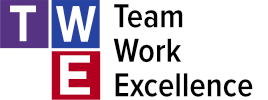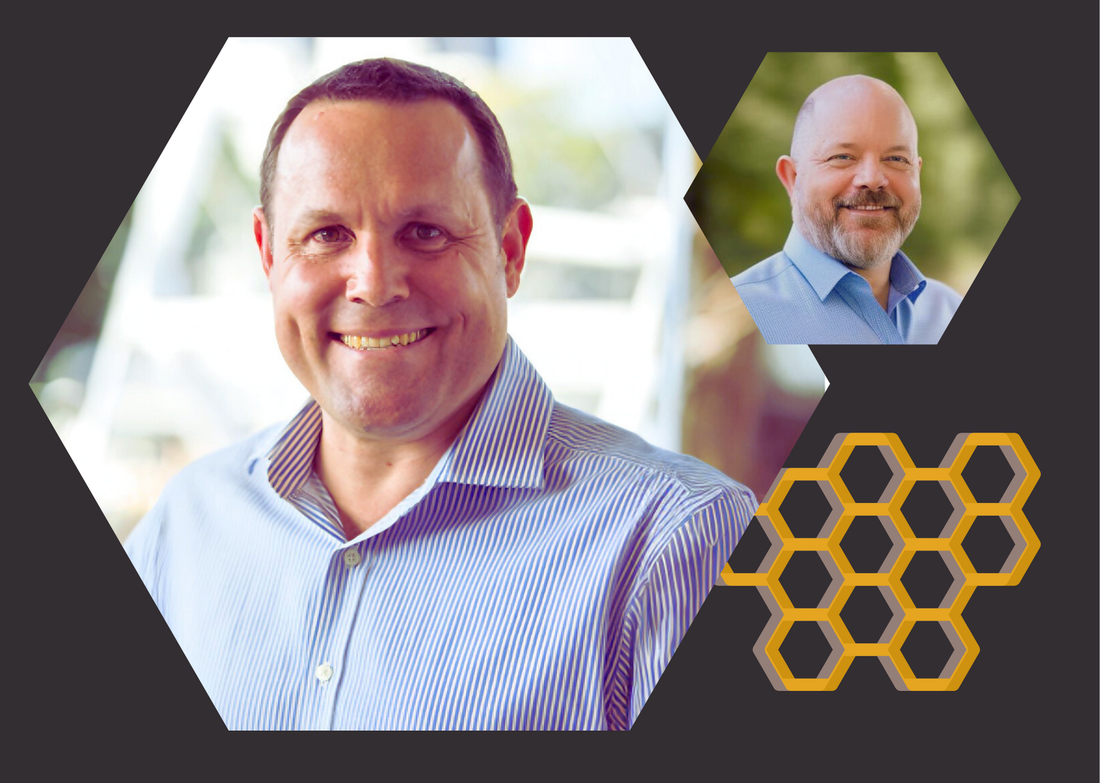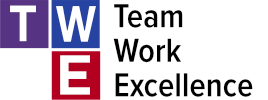|
Episode Summary
Rita Ernst, Positivity Influencer and Consultant, joins Tim Sweet on the show to talk about big changes in business. When exactly does a business go from thriving to struggling, and why? Rita’s hint is that it happens far before the impact is seen in the financial bottom line. She and Tim unpack the signs. Rita identifies how a change in work habits is the first sign of a business in the midst of change. She illustrates this with examples from COVID, where organizations all buckled down and gave their all during the first years but now are experiencing a push back, a difference in how people are interacting with customers, work that was always on time before now being unfinished. This is where righting the business should start, but businesses wait until they see it in the bottom line to call in a consultant like Rita or Tim. Tim Sweet and guest Rita Ernst dissect how an individual can right the course of a business going through big change. If everyone is afraid to say the hard truths to the boss, how will change begin? It’s not about being toxic, it’s about showing up with an honest desire to help. Positivity is the key ingredient in Rita’s book Show Up Positive and she discusses specific lessons from her book with Tim. It’s a conversation every level of employee in a business needs to hear.
Episode Summary
Tim Sweet welcomes guest Paul Farmer of Mentoris to the show to talk about feelings. Specifically, how feelings apply to business and leadership. Paul works to get leaders to understand exactly how the feeling of a purchase or investment drives consumers and employees far more than logic when you get to the heart of things. He and Tim break down how it works.
Episode Summary
In this fourth episode in our 4-part series, we talk about dealing with what has sat too long in the back of life's fridge. Let's explore how to get moving and keep moving. Build momentum back into your home and work.
Episode Summary
In this third episode, of this 4-part series, we continue to explore what has sat too long in the back of life's fridge; what might be festering and what can you do about it. We talk about OVERWHELM and how to create space so you can create space.
Episode Summary
In episode two of the 4-part series, we continue to explore what has sat too long in the back of life's fridge; what might be festering and what can you do about it.
Episode Summary
To kick off the SWEET ON LEADERSHIP Podcast, I am joined by Julie Freedman-Smith to talk about the stress and languish you may be feeling at home and at work. To grow and stay current, change is inevitable, especially in the rapidly evolving sectors of science, technology, engineering, and mathematics (STEM). To stay ahead of the leadership challenge we face in ever changing technology, globalization and workforce dynamics, it's not about constantly adding skills but transforming the way we think and operate. STEM leaders excel in learning and adapting, but the real key to sustained success lies in transformational thinking. In this blog post, we'll delve into this concept and the importance of strategic simplicity, language alignment, and performance well-being - insights from a recent conversation I had with Richard Young Phd, former olympic athlete and coach. By the end, you'll understand why the future of STEM leadership relies on simplifying, not complicating. You’ll further understand how these factors can be applied to foster a transformational, even seismic shift in the mindsets in STEM leaders wanting to increase their impact.
The Power of Transformational Thinking in STEM Let's face it - STEM industries are in a constant state of flux. A PwC survey revealed that 97% of tech industry CEOs consider innovation a top priority, with 61% planning to increase their innovation investments. But, are we focusing enough on the human element of this innovation? When businesses discuss transformation, they often look beyond current practices to create new solutions. For STEM leaders, innovation is an attractive approach. But this is not transformation, and there is a limited understanding what transformation truly entails. Transformation is not about adding more to the mix; it's about creating a fundamental shift of what it means to “be”. It is not building on what is already existing, it's about measured, intentional destruction and conscious reengineering. Compare this to an adaptive and additive approach - something STEM professionals do very well. Because it is a preference, STEM leaders are often very open to the idea of ‘transformation’ - but then try to accomplish it through a linear additive process. This is flawed; let’s discuss the alternative. Demystifying Transformation - a Fundamental Shift Richard Young's theory of strategic simplicity, language alignment, and performance well-being offers a roadmap for embedding transformational thinking in STEM leaders. Let's break down these components: Strategic Simplicity Strategic simplicity involves identifying your strategy down to its core elements and focusing on them. It's about understanding your organization's purpose, values, and goals, and aligning all efforts towards achieving them. Strategic simplicity helps teams stay focused on what is essential and avoid distractions that can lead to loss of time, energy, and resources. The benefits are significant, enabling leaders to stay agile and adapt to changes in technology, globalization, and workforce dynamics. By focusing on the core elements of their strategy, leaders can avoid getting dogmatic, and bogged down in the complexities of their roles, or the myths of their disciplines. It helps maintain clarity and direction and openness. Additionally, strategic simplicity helps leaders communicate their vision and goals to their team members, enabling them to align their efforts towards achieving shared goals by leveraging the most fundamental. When Steve Jobs rejoined Apple in 1997, he simplified their strategy to focus on user-friendliness and innovation. This move birthed the iPod, iPhone, and iPad - products that disrupted the tech industry. He simplified what market performance had to be. Language Alignment Creating a shared language and culture that bolster your strategy and goals is crucial. It's about using inclusive, empowering language to cultivate a culture that promotes growth and learning. Language alignment helps STEM leaders create a shared vision and culture that enables their teams to work towards shared goals. The importance of language alignment cannot be overstated. Quality of communication precedes quality of performance. When leaders use language that is unclear and confusing, it can lead to miscommunication and misunderstandings among team members. This can create a lack of trust and collaboration, hindering the team's ability to work towards shared goals. By creating a shared language and culture, leaders can foster an environment of transparency, trust, and collaboration, enabling their teams to work together effectively. Promoting Performance Well-being in Organizations Performance well-being refers to employees' physical, emotional, and mental health, which are essential for optimal performance. This involves creating a supportive and inclusive environment that promotes employee satisfaction, productivity, and creativity. Prioritizing well-being can foster a positive and productive work environment. But to help others, leaders need to also advocate for their own wellbeing. Professionally, nothing is more important to a good work-life balance, then finding a job that fits.
By focusing on the three questions and developing your skills in strategic simplicity, language alignment, and performance well-being, will help you become a consistent innovator and value creator as a STEM leader. Just like the notable leaders we've looked at, you can create a culture of success and growth within your organization while also taking care of yourself and your team. In Summary Transformational thinking is crucial in business, but particularly for linear and additive thinkers, such as STEM leaders who want to stay ahead of the game. By adopting Richard Young's theory of strategic simplicity, language alignment, and performance well-being and applying these practical strategies, you can foster a culture of innovation, create a positive work environment, and steer your organization towards success. A great framework for developing a transformational mindset! While STEM disciplines focus on additive and linear approaches, a leadership future in STEMis not about adding more skills or tasks to your plate, but transforming to lead others effectively. I'd love to hear about your experiences with transformational thinking in STEM leadership. Share your thoughts in the comments below! Are you ready for this transformation? As an impactful and effective leadership consultant, I offer personalized coaching in adopting transformational thinking and adapting Richard Young's sport theories into your business. If you're interested, don't hesitate to reach out. This could be the first step towards transforming your thinking and your organization.
 Credit: Chris Trevas Credit: Chris Trevas ON STAR WARS DAY: let's talk about Transformation and how it is necessary for any leader to grow as their influence increases. Just before Obi-Wan Kenobi died in Episode IV, he said, "If you strike me down, I shall become more powerful than you can possibly imagine." It is a powerful idea - through destruction, we can become more powerful. Obi-Wan's purposefulness endured, and his legacy and teachings would empower Luke, who followed. And that's exactly what transformation is all about. Just like Jedi Masters who achieved enlightenment and joined the force, leaders in business also go through a transformation to be able to inspire, empower, and lift up others. They have to destroy that which they were for something new. Nowhere is this more evident than when working with technical or academic experts. They've developed in specialized roles and environments - so taking the lead of people can seem like a galaxy far, far away. Finding success in a specific discipline, then being promoted into leadership can be a shock. When undersupported, it can lead to struggle, which leads to apathy and fear. It's a trip to the Dark Side many may take, and it unnecessarily risks the success of the organization. It can be avoided - but you need a guide. You need to forget all you know or think you know.  Credit: Kim Syberg www.artstation.com/kimsyberg Credit: Kim Syberg www.artstation.com/kimsyberg Don't be a Nerf Herder.
 Credit: PraytheReyAway Credit: PraytheReyAway Let go, Luke: To achieve transformation, leaders must learn to value themselves and make development intensely personal. As Yoda once said, "Do. Or do not. There is no try." Transformation is not an easy process. It requires hard work, dedication, and a willingness to learn and grow. It often requires an expert to present new ideas and perspectives. As Obi-Wan said, "Your eyes can deceive you, don't trust them." Leaders must be willing to question their own assumptions and beliefs to achieve true transformation. Transformation is a necessary process for leaders in business, just as it is for Jedi knights. It requires vigilance, dedication, and a willingness to learn and grow, then "The Force will be with you, always." May the Force be with you on your journey toward transformation and leadership success. #leader #leadership #maytheforce #starwarsday #obiwan #transformation #stem #accademic #maythe4thbewithyou |
Videos, Articles, Tools and More for Leaders in BusinessSET UP FOR SUCCESS?
|
|
© TeamWorkExcellence 2023. All rights reserved.
|











 RSS Feed
RSS Feed
